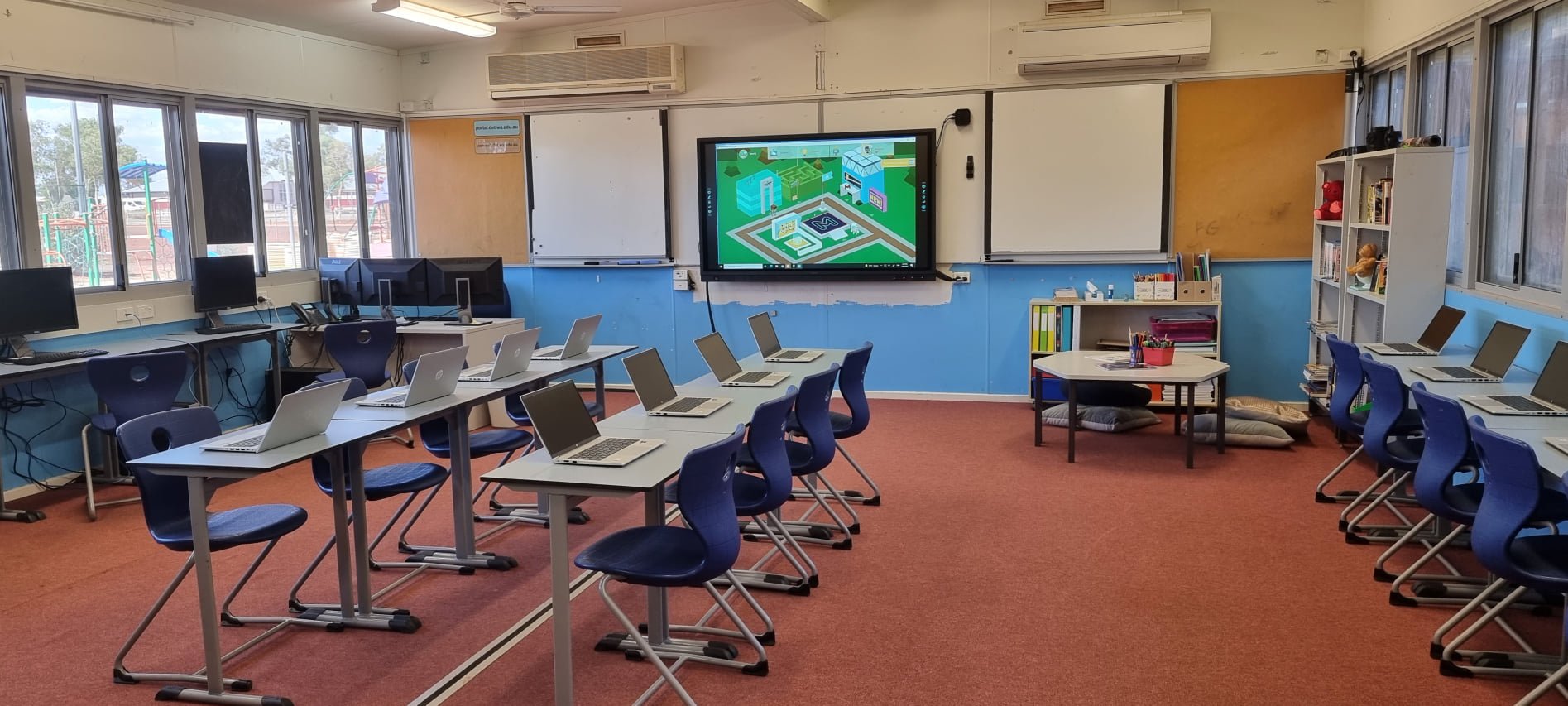
Digital Skills for Students
Digital literacy for future custodians

SNAPSHOT
We consulted with Wiluna Youths to hear their views on what their needs were and IT resources and ‘new look’ youth centre was high on their list. We listened and acted.
We funded brand new laptops, gaming stations, VR headsets, iPads and colourful furniture across both the Wiluna Community School and the Youth Centre which service approximately 100 children and their families.
There was unprecedented number of youth and family members using the new resources at the Youth Centre and School.
Disengaged youths increased their engagement in school and the youth centre because of the new IT resources.
Increased attendance at the Wiluna Community School because of increased engagement with new IT resources.

IN PICTURES
THE STORY
Digital Tools to Stay On Country.
Hours from the nearest town, Wiluna is a tranquil outpost with around 700 people, over half of whom are Martu. Technology can build a bridge to overcome this isolation - offering employment and career opportunities and tools that can allow young people to stay on country and stay connected to their families and their homelands.
Learning culture with the right technical tools
Less obvious yet vital, is how technology can be harnessed to explore, embed and promote Martu culture and knowledge.
Digital channels can be used to exchange experience, learning and knowledge to a collective audience - to small Martu communities or even globally.
To equip young people for their roles as future custodians in the digital age, Martu Elders saw a need to weave together traditional knowledge with contemporary technologies
Teachers at the Wiluna Remote Community School spoke of the hours spent retrofitting donated second-hand equipment to contemporary STEM curriculums – a time-consuming and near impossible task that ate into the community’s limited resources and failed to offer the students’ a rich experience.
They could see that cutting-edge technologies could help them engage students in different ways, using digital tools like virtual reality (VR) to reimagine education and culture. For teachers battling to connect with disengaged youth, this was particularly pertinent. But while the community had ideas of what young people needed, young Martu had their own ideas.
In a large, underequipped room that was the Youth Centre, they quietly spoke up, their voices growing with each request.
A Youth Centre they could be proud of. The latest technology to enjoy. Somewhere to go after school and during the holidays. These simple requests were punctuated with laughter - their sheepish grins incredulous that anything would happen.
Within a few months, we installed brand new technology for both the Youth Centre and Wiluna Remote Community School - four Virtual Reality sets, seven gaming stations with headsets and multi-coloured swivel gaming chairs, and 30 brightly coloured beanbags. During school hours the 82 students in the adjacent School had access to the technology, as well as receiving 20 new laptops, 10 new iPads and two VR headsets from us.
The Youth Centre sprung to life. Around 50-60 people visited the centre each day over the summer holidays – some of the highest levels ever recorded. Children and teens were joined by their families to explore and enjoy games, music, videos, VR and cinema nights, supported by onsite IT specialists. In a town with no community centre, the young Martu had helped create an experience that brought families and the community together. School attendance also dramatically increased, with the immersive technologies sparking the interest of students who became more interested and engaged in learning.
Yet perhaps even more significant was the feedback reporting the young people finally felt heard and important enough to have new things, like kids in other places.








